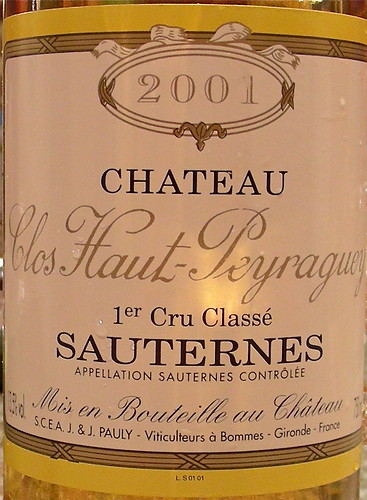So suddendly the other day, he was ready. He found a recipe on the internet, ordered a foie gras, and bought some quails and frozen puff pastry dough. He didn't have any truffles but decided to use a combination of mushrooms and truffle oil instead.
He deboned the birds, chopped the vegetables for the duxelle, sliced the foie gras, stuffed and roasted the birds, baked the puff pastry, and finally placed each quail in its coffin. The result was amazing: it really looked like the quails in the movie! And it tasted very yummy too! The birds were tender and juicy with earthy flavors and the puff pastry was light and flaky and not soggy at all. We also agreed that having a small piece of seared foie gras to accompany the quail would have been even better.

The stuffed uncooked quails

The quails in their coffins
 A 1846 Clos de Vougeot is the wine featured in Babette's Feast. I didn't have a Clos de Vougeot in the cellar but I found a 2002 Vosnes-Romanée Premier Cru Les Suchots Maison Champy. The Vosnes-Romanée appellation is located south of Vougeot in the Côte de Nuits. The vineyard of “Les Suchots” is considered one of the finest of the Vosnes-Romanée Premier Crus, approaching grand cru level in quality. It is located on a mid slope in the Northern part of the village of Vosne-Romanée, near the famous “Echezeaux Grand Cru”.
A 1846 Clos de Vougeot is the wine featured in Babette's Feast. I didn't have a Clos de Vougeot in the cellar but I found a 2002 Vosnes-Romanée Premier Cru Les Suchots Maison Champy. The Vosnes-Romanée appellation is located south of Vougeot in the Côte de Nuits. The vineyard of “Les Suchots” is considered one of the finest of the Vosnes-Romanée Premier Crus, approaching grand cru level in quality. It is located on a mid slope in the Northern part of the village of Vosne-Romanée, near the famous “Echezeaux Grand Cru”.The wine had a deep red color and a smoky nose of cherry, violet and spices. On the palate, it was medium-bodied, quite complex, with mouth-coating savory flavors and great finesse on the finish. I don't know about the Clos de Vougeot 1846 that Babette served with her quails but our Vosnes-Romanée 2002 was not bad at all.
Technorati tags: wine food & drink





